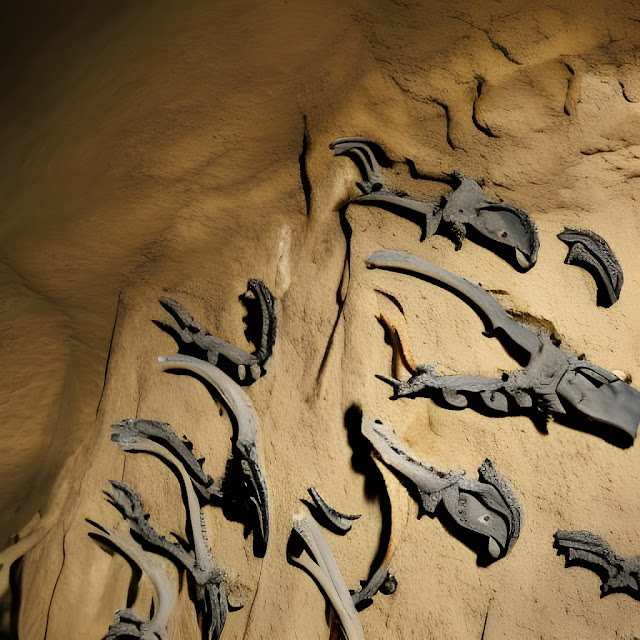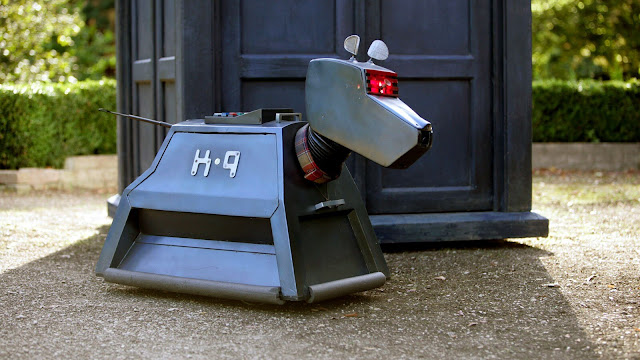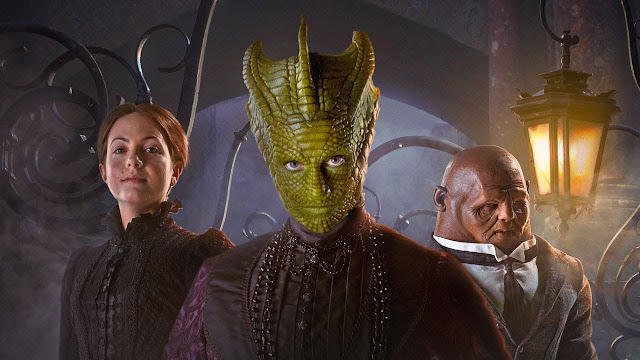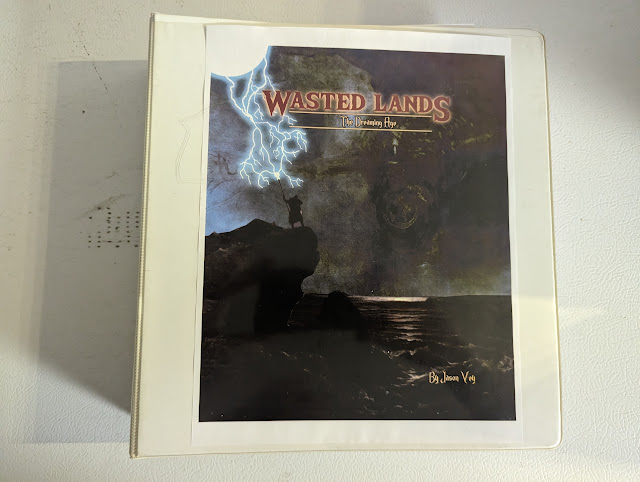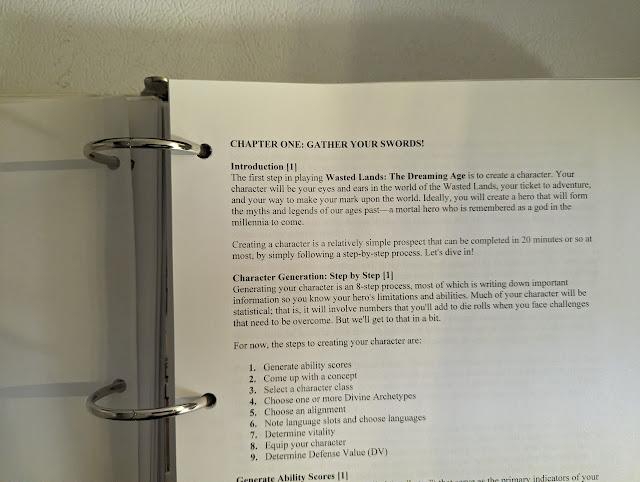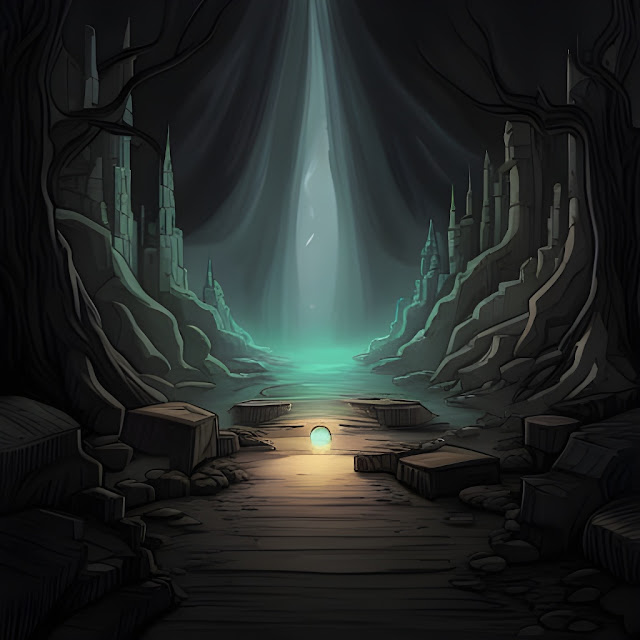Before the advent of the internet, the magazine was the focus of the hobby’s attention, a platform in whose pages could be news, reviews, and content for the roleplaying game of each reader’s choice, as well as a classified section and a letters page where the issues of day—or at least month—could be raised and discussed in chronically lengthy manner. In this way, such magazines as White Dwarf, Imagine, Dragon, and many others since, came to be our community’s focal point and sounding board, especially a magazine that was long running. Yet depending upon when you entered the hobby and picked up your first issue of a roleplaying magazine, you could have missed a mere handful of issues or many. Which would have left you wondering what was in those prior issues. Today, tracking down back issues to find out and complete a magazine’s run is much easier than it was then, but many publishers offered another solution—the ‘Best of…’ magazine. This was a compilation of curated articles and support, containing the best content to have appeared in the magazine’s pages.
1980 got the format off to a good start with both
The Best of White Dwarf Scenarios and The
Best of White Dwarf Articles from Games Workshop as well as the
Best of Dragon from TSR, Inc. Both publishers would release further volumes of all three series, and TSR, Inc. would also reprint its volumes. Other publishers have published similar volumes and in more recent times, creators in the Old School Renaissance have begun to collate and collect content despite the relative youth of that movement. This includes
The Gongfarmer’s Almanac which has collected community content for the
Dungeon Crawl Classics Roleplaying Game since 2015 and
Populated Hexes Monthly Year One which collected the content from the
Populated Hexes Monthly fanzine. The ‘Best of…’ series of reviews will look at these and many of the curated and compiled from the last four decades of roleplaying.
—oOo—
 The Best of White Dwarf Articles
The Best of White Dwarf Articles was published in 1980. Containing “Selected material from the first 3 years of White Dwarf”, from
White Dwarf Issue No. 1 to
White Dwarf Issue No. 20, its focus is
Dungeons & Dragons and
Traveller. This is no surprise given the popularity of the world’s first roleplaying game and the world’s leading Science Fiction roleplaying game. It is also no surprise that the versions of
Dungeons & Dragons supported within the pages of
The Best of White Dwarf Articles were the
original version published in 1974 and the J. Eric Holmes designed
Basic Dungeons & Dragons. By 1980, the three-core books for
Advanced Dungeons & Dragons had only just been published, and consequently the content of the compilation predates them. This is not to say that
The Best of White Dwarf Articles lacks sophisticated content, either for 1980 or now. However, gaming needs and tastes have greatly changed in the last forty years and not everything in the pages of
The Best of White Dwarf Articles would find its way into
Dungeons & Dragons today.
The Best of White Dwarf Articles opens with the majestic ‘The Monstermark System’ by Don Turnbull. Appearing in the first three issues of
White Dwarf, this is a system of rating monsters in
Dungeons & Dragons for their lethality versus the ability of base Player Characters to defeat them. It first rates them for their Defence and Aggressive values to provide a Monstermark value which could be further modified by their abilities and special powers—paralysation, poison, regeneration, and others. Turnbull first works through fairly standard monsters such as Kobolds and Manticores before moving on through undead, fire-breathing monsters, demons, and more. Throughout he compares the completed Monstermark Level for each monster versus their Greyhawk Level, the latter more often than, not quite providing an accurate measurement of their lethality versus the Player Characters. Turnbull also uses his Monstermark System as a means to more fairly award Experience Points, but avoids extending it as a means to measure treasure.
‘The Monstermark System’ was much lauded in its day. It is still a good example of a writer dissatisfied with a mechanical aspect of a roleplaying game and devising and working through an alternative system. There is no doubt that at the time, some groups would have adopted this over the Greyhawk system, but of course, it would have remained a house rule. These days it is a hard read, feeling outdated and outmoded, and it would have probably felt the same fairly quickly as new versions of
Dungeons & Dragons were taken up. There are points of interest in the article though, Turnbull often referring to his ‘Greenlands’ dungeon. These sadly, are only in passing, the only existing details being here and other mentions in the pages of
White Dwarf magazine.
‘The Magic Brush – Fantasy Figure Painting As An Art’ by Shaun Fuller is another three-part series. It ran from
White Dwarf Issue No. 17 to
White Dwarf Issue No. 20 and provided a comprehensive guide to figure painting. With the roleplaying hobby only being six years by this time and having strong roots in miniatures wargaming, it is no surprise that miniatures would feature in the early issues of
White Dwarf. Coverage of them would lessen during the early eighties, but would make a resurgence as the importance of Citadel Miniatures to Games Workshop grew and grew. Nevertheless, painting guides always proved popular and it is subject that
White Dwarf would return to again in subsequent issues. Even if the paints and styles have changed over the years, this is a solid article on the subject whose advice could still be followed today.
The compilation includes two new Classes, one familiar, one unfamiliar, for
Dungeons & Dragons by Brian Asbury, another regular contributor to
White Dwarf. ‘The Barbarian’ is from
White Dwarf Issue No. 4. There are similarities between it and the Barbarian Class which E. Gary Gygax would design and include in
Unearthed Arcana and thus the Class we have today in
Dungeons & Dragons, Fifth Edition. It combines features of the other Classes with those new to it. Thus, the Class can track like the Ranger and hear noise, climb, and hide in the shadows like the Thief, and catch missiles like the Monk, but cannot wear armour until later Levels, possess a Fearlessness which can send them berserk any time it is subject to fear effects, and has a First-Attack Ferocity which grants a bonus to hit and damage if the Class attacks on the first round and has the initiative. Notably, this version of the Class is allowed to use magical items. There is an option to treat the Barbarian Class as a Race as per
Basic Dungeons & Dragons. This version of the Barbarian Class is more constructed than built from the ground up, and with elements such as First-Attack Ferocity is fiddly in places.
The second Class is ‘The HOURI character class’, published in
White Dwarf Issue No. 13. The Houri is an alternate magic-using Class whose primary abilities focus is on the seduction of members of the opposite sex and a combination of Charm-related spells and spells whose somatic component involves kissing the target. There is even a seduction mechanic in which Paladins, Rangers, and Monks are very hard to seduce, whereas Barbarians and Half-Orcs and Orcs are relatively easy. Primarily intended to be a female only Class—the option to play a Gigolo rather than a Houri is male is suggested, the description includes new spells, such as
Impotence and
Ecstasy, and entertaining new magic items like the
Manual of Advanced Lovemaking and
Lipstick of Irresistibility. Subtle the Houri Class is not and it feels very much out of place in a magazine which had a primarily male readership. The salaciousness of the Class borders on the tasteless if not the offensive—and yet… The Houri Class is not unplayable. It would be unsuitable for most campaigns, especially any focused-on dungeon adventures as much of her magic and certainly her abilities would have little application down there, unless as suggested, she also has Levels in the Thief Class as well. Instead, use the Class in an urban campaign with pulp or noir sensibilities and plenty of roleplaying and it would really work. It would take a mature audience. Ultimately, the Houri is too specialised a Class and as a subject for inclusion in the pages of
White Dwarf, best regarded as a misstep.
The barbarian theme is continued with ‘The Barbarian’ a two-player board game designed by Ian Livingstone for
White Dwarf Issue No. 15. One player takes the role of Vaarn, a barbarian seeking to restore civilisation and withstand the onslaught of mutated beasts and the undead. He can only do this by locating the magical sword and shield of the Old Fathers. The other player controls the werewolves, wild hill men, wraiths, zombies, goblins, and giants arrayed against him. Vaarn’s player wins by locating both sword and shield and leaving the play area, whilst the creature player wins by killing him. Vaarn must explore six types of terrain to locate the magical items, although there are decoys and cursed items to be found too. It is a serviceable hex and counter, fantasy-themed game, not dissimilar to the highly regarded solo board from Heritage,
Barbarian Prince, but simpler and more straightforward. Enjoyable for a playthrough or two.
‘Chronicle Monsters’ is the first of two contributions from designer Lewis Pulsipher. Published in
White Dwarf Issue No. 15, this presents the various monsters from Stephen Donaldson’s ‘The Chronicles of Thomas Covenant, the Unbeliever’ for
Dungeons & Dragons. The novels were very popular at the time and these adaptations would have been welcomed by the magazine’s readership. However, the novels have not been fully adapted in their own right and this is likely one of the few times where material from them has received such a treatment. Including such creatures as the Raver, the Ur-Vile, Cavewrights, and Seareach Giants they look to be well done and made all the better by being illustrated by Russ Nicholson.
Andy Slack’s ‘Expanding Universe’ ran for four issues from
White Dwarf Issue No. 13 to
White Dwarf Issue No. 16. Written for use with Game Designers’ Workshop’s
Traveller roleplaying game—and thus the only non-
Dungeons & Dragons roleplaying content in
The Best of White Dwarf Articles—this greatly expanded upon the core rules with additions for skills, poisons and chemical warfare, ship weaponry, artillery, and explosives, campaign locations, alien life, and robots, and social status and psionics. In many cases, they supplement the often-sparse rules in
Traveller—the ‘Classic Little Black Books’ original edition
still available today, such as handling skill rolls by Player Characters without a relevant skill and suggesting an Experience and improvement mechanic, something that
Traveller lacked. In the main, the articles cover aspects of a far future setting not covered in the rules, such as those for poison gas and other weapons of mass destruction, more detailed missile design, and so on. The rules here are excellent, efficiently expanding and supplementing the core rules of Traveller in useful fashion. Slack has since expressed his
unhappiness with the editing and updating of the contents of the four original articles for inclusion in
The Best of White Dwarf Articles and in their original format can be found at the
Citizens of the Imperium Traveller website.
‘The Fiend Factory’ collates some of the best monsters from the long-running department that appeared in the first fifteen or so issues of the
White Dwarf. First appearing in
White Dwarf Issue No. 6 and edited by Don Turnbull, the department grew out of an earlier series in the magazine called ‘Monsters Mild and Malign’, also edited by Turnbull. With
White Dwarf issue No. 18, Albie Fiore would edit the reader-submitted content of ‘The Fiend Factory’, but the entries in ‘The Fiend Factory’ in
The Best of White Dwarf Articles consist of the ten best creatures as voted for by the magazine’s readership. The article includes some classics, many of which would be included in the
Fiend Folio, which Don Turnbull would edit for TSR UK Ltd. Here then, are the Hook Horror, created by Ian Livingstone, Cricky Hitchcock’s Svart, the Necrophidius (or Death Worm) by Simon Tilbrook, and of course, the Githyanki, by one C. Stross. Stross, of course, would go on to become a Science Fiction and horror author. These are all fun, entertaining monsters and this ‘The Fiend Factory’ collation is one of the highlights of
The Best of White Dwarf Articles.
Lastly, ‘D&D Campaigns’ is Lewis Pulsipher’s second contribution to
The Best of White Dwarf Articles. This ran in
White Dwarf Issue No. 1,
White Dwarf Issue No. 3,
White Dwarf Issue No. 4, and
White Dwarf Issue No. 5, but not
White Dwarf Issue No. 2. In this series, Pulsipher examines what
Dungeons & Dragons and how he views it can be best played, particularly as a campaign. For example, in terms of style whether as the players versus the game and its monsters, puzzles, or traps, or as a fantasy novel and thus telling or experiencing a story. It is interesting that he notes that the latter style prevails in California, which would be related and explored in more detail in Jon Peterson’s
The Elusive Shift. There is advice on being a fair Referee, be logical in in the design and play of both dungeon and campaign, the dangers of a Player Character being played in more than one campaign world (an odd practice by modern standards), handling the division of treasure according to Alignment (Lawful Player Characters fairly, Chaotic Player Characters on a who grabs it first basis), regulating the learning of spells and the time to do so, and more. Some of the advice has dated because both the rules have since changed—multiple times in fact—and how
Dungeons & Dragons is played differently. If many of the specifics are now obsolescent, there is nevertheless, broader advice here that still holds and would be could for the latest version of
Dungeons & Dragons. For 1977 and 1978, when
Dungeons & Dragons was just four years old and ‘D&D Campaigns’ was serialised, this was all good advice.
However, interspersed between all of this is content from the other long-running department in White Dwarf focusing on reader-submitted content—‘Treasure Trap’. Four themed compilations for ‘The Best Of Treasure Trap’ appear in the pages of
The Best of White Dwarf Articles. These are ‘Magic Items’, ‘Potions’, ‘Tricks and Traps’, and ‘Spells’. For example, Roger Coult’s ‘The Swords of Meryn Caradeth’ presents two powerful blades and some flavoursome background to work them into a setting. Drink James Meek’s
Potion of Truth and the imbiber must tell the truth; David Bell’s
Potion of Ultravisibility and the imbiber shines like a torch, the colour of light depending on his Alignment; and a
Dragon Breath Potion by Kathryn George—one of the few female contributors to
White Dwarf—and the imbiber gains a one-shot breath weapon that varies according to the dragon’s colour. David Bradbury’s ‘Frozen Food!’ is an old trick of setting up the Player Characters to eat frozen Troll meat and then have it regenerate inside them, whilst Roger Musson’s ‘The Pit and Rope Trick’ sets up several Gelatinous Cubes as traps above and below the Player Characters. These definitely feel ‘Old School’ in their design. Phil Masters’ spell,
Sword of Warning, is inspired by the sword of Damocles and can be cast by a Cleric as symbol of divine displeasure, whilst ‘
Jebansalf’s Eye of Back-Seeing’ by Daniel Adler is for both Cleric and Magic-User and turns the caster’s Pineal gland into a backwards facing eye, thus preventing attacks from behind or backstab attempts. Whilst some of the traps might not make it into a modern dungeon, the content of all four parts of ‘The Best Of Treasure Trap’ are playable today as they were in the late seventies. If not for
Dungeons & Dragons, then certainly for the retroclone of the group’s choice.
There is one last aspect of
The Best of White Dwarf Articles which deserves mention and that is the adverts. There is a sense of nostalgia and wonder in examining these adverts from the past, for shops that have long since closed down such as Dungeons & Starships or Forever People and for products long out of print, like the
Knights of Camelot board game from TSR, Inc. Ral Patha’s board games—
Witch’s Cauldron,
Final Frontier,
Galactic Grenadiers, and
Caverns Deep, and then Metagaming’s
The Fantasy Trip.
Physically,
The Best of White Dwarf Articles is cleanly, tidily presented. It does need an edit here and there, but what stands out is the amount of art on display. All of the monsters in ‘The Fiend Factory’, many of the traps in ‘The Best Of Treasure Trap’, and so on are illustrated, and it gives the compilation an airy feel. The Conan-esque cover by Steve Brown—complementing the one which would appear on the cover of
The Best of White Dwarf Scenarios—is excellent.
The Best of White Dwarf Articles is a bit hit and miss, primarily because what might have been seen as the best content drawn from the first three years of issues of
White Dwarf in 1980 do not look like the best today. The Houri Character Class deserves mention as a miss, even in 1980, unnecessarily prurient and unsuitable for much of its readership, and perhaps ‘The Monstermark System’ might be regarded as miss today, but not in 1980 when dissatisfaction with an aspect of the rules could be expressed in the pages of a leading magazine in the industry and an alternative readily suggested. The rest of
The Best of White Dwarf Articles consists of hits and that is how it should be for a compilation or ‘Best of…’ volume.
The Best of White Dwarf Articles highlights how even though the magazine might not yet have hit its stride—and when that was, is dependent on the reader—there was still a lot to be found within the pages of
White Dwarf that was useful, playable content then and surprisingly, now. Consequently,
The Best of White Dwarf Articles manages to show how the hobby has, and has not, changed since it was published in 1980.
The Best of White Dwarf Articles is a snapshot of the British roleplaying hobby in the seventies, that for the most part, remains still readable and if you want, still useful.







